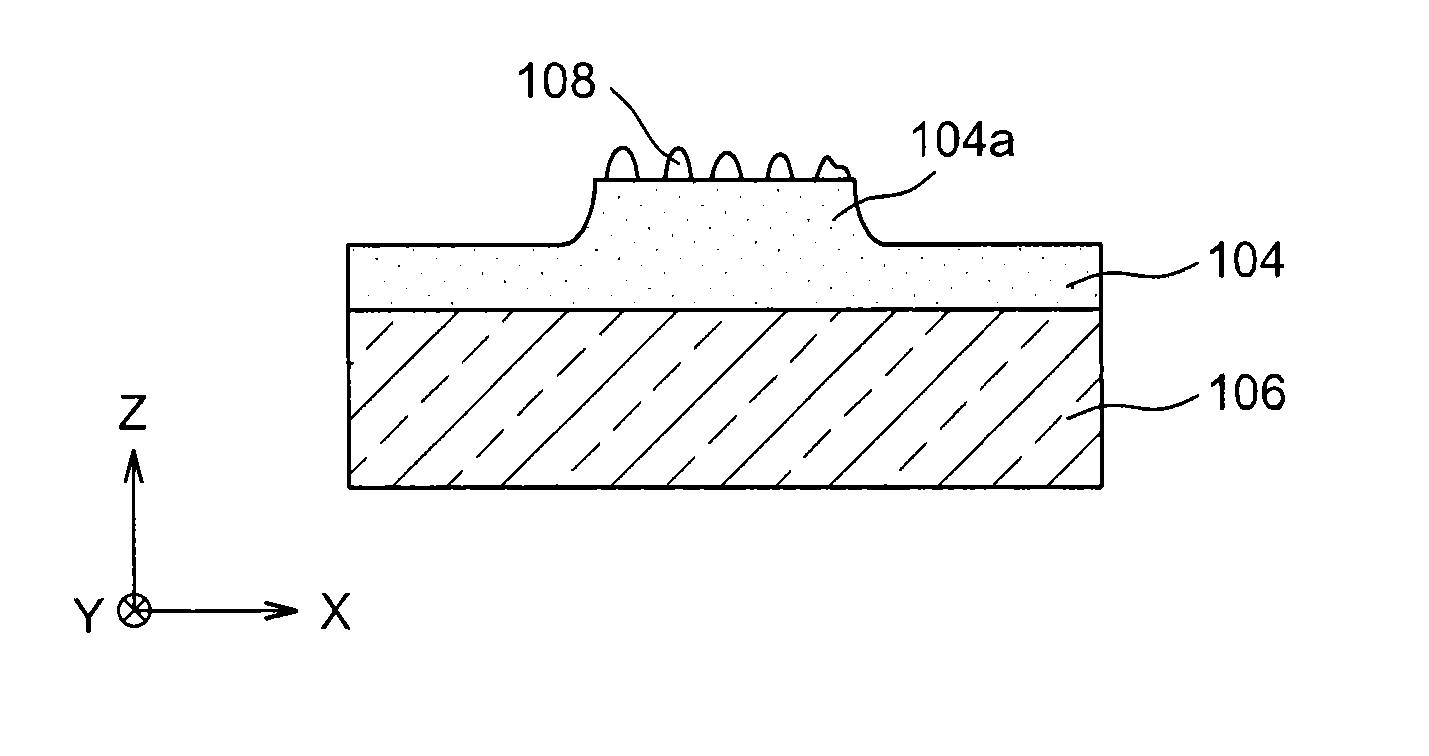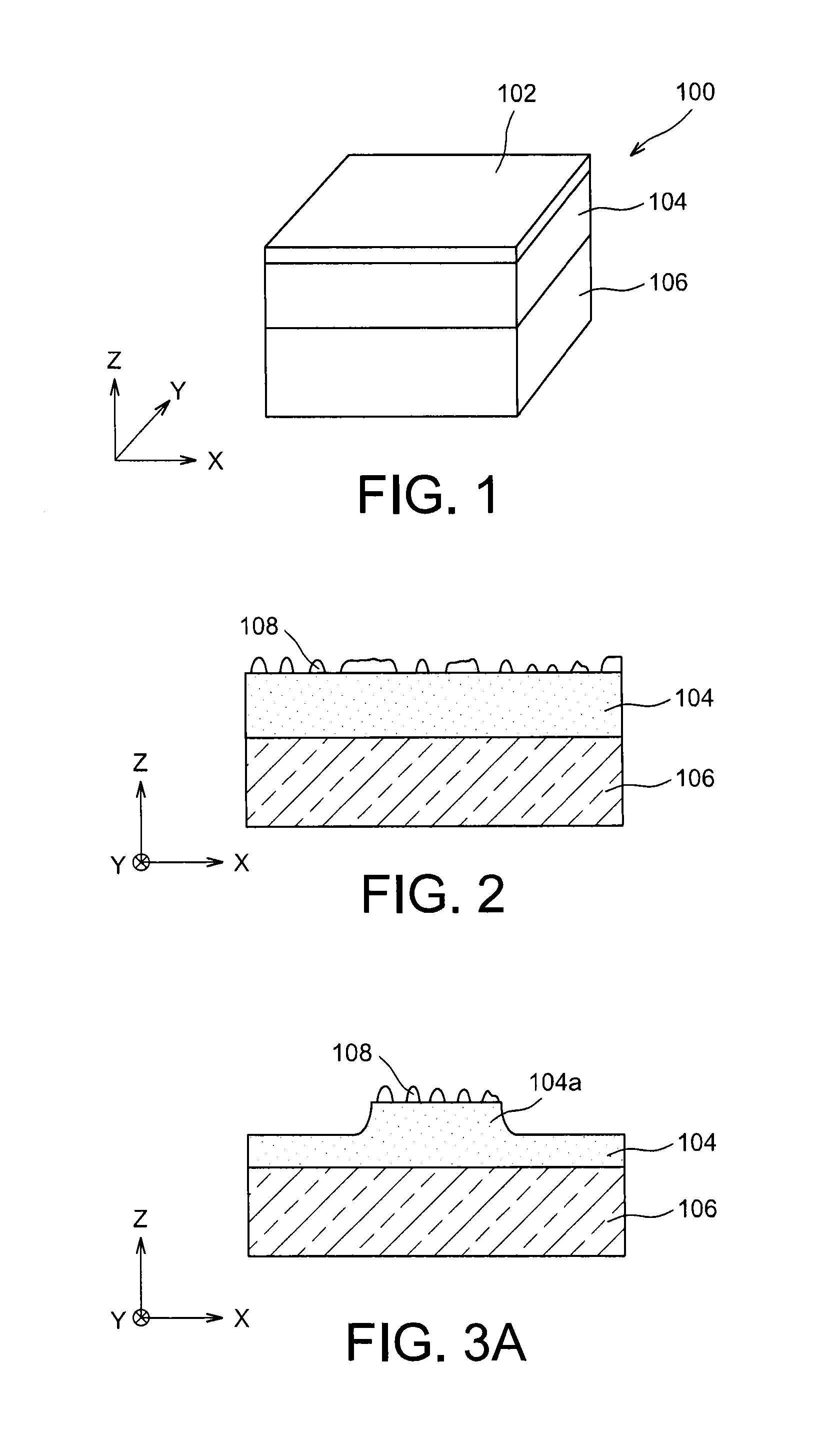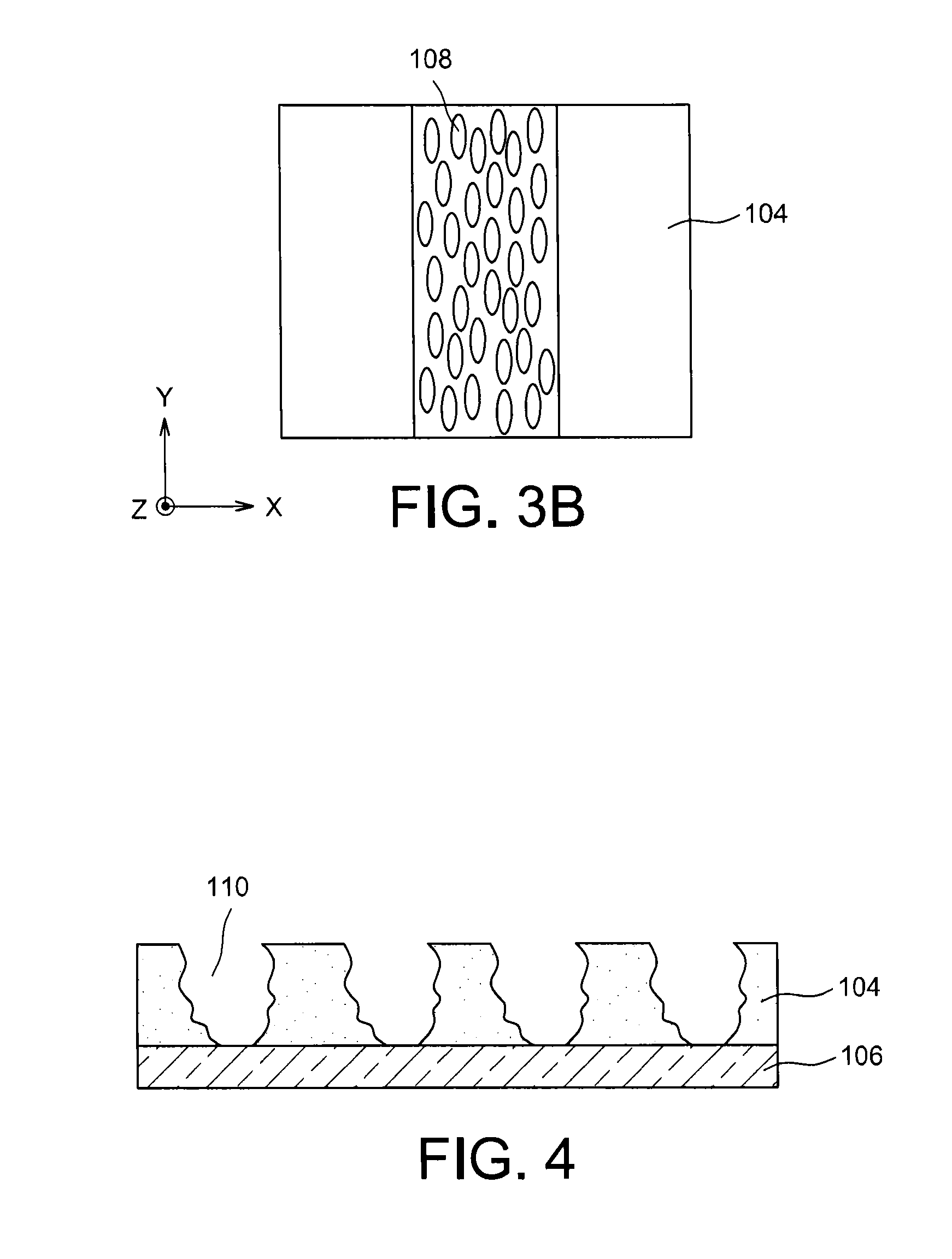Method for making semi-conductor nanocrystals
a technology of semi-conductor nanocrystals and nanocrystals, which is applied in the direction of material nanotechnology, semiconductor devices, electrical devices, etc., can solve the problems that the dimensions of these nanocrystals are too large to be used in some nano-scale electronic devices
- Summary
- Abstract
- Description
- Claims
- Application Information
AI Technical Summary
Benefits of technology
Problems solved by technology
Method used
Image
Examples
first embodiment
[0035]The steps of a method for making semi-conductor nanocrystals are described in connection with FIGS. 1 and 2.
[0036]The method for making semi-conductor nanocrystals is implemented from a first SOI substrate 100 (represented in FIG. 1) comprising a thin layer (having a thickness lower or equal to about 1 μm, and preferably between about 1 nm and 100 nm), of monocrystalline silicon 102, having a crystallographic orientation (001), covering a buried dielectric layer 104 comprising SiO2 which rests on a monocrystalline silicon thick layer 106 forming the layer supporting the SOI substrate.
[0037]The method is also implemented for a second, third and fourth SOI substrate, having similar structures to that of the first SOI substrate 100, but wherein the silicon thin layer 102 is composed of silicon called biaxially stressed in the plane of the layer 102, that is in both directions X and Y represented in FIG. 1. This biaxial stressed condition is equivalent to a biaxial strain undergo...
second embodiment
[0059]In a second embodiment, the step of chemically treating the silicon thin layer 102 can be replaced by depositing carbon chemical species, forming on at least one part of the thin layer 102 a carbon layer the thickness of which will be selected as a function of the desired density of the silicon nanocrystals, as well as a function of the desired dimensions of theses silicon nanocrystals.
[0060]The carbon layer is formed by exposing, or irradiating, the silicon thin layer 102 by an electron beam for a duration proportional to the desired carbon thickness. The carbon is locally deposited in order to define, at the surface of the thin layer 102, a polluted surface whereas its environment is not or few polluted. The carbon making up the layer formed by exposing the semi-conductor thin layer 102 comes from the environmental pollution surrounding the substrate, and corresponds for example to the environmental pollution within a scanning electron microscope. The electron beam has for e...
PUM
| Property | Measurement | Unit |
|---|---|---|
| temperature | aaaaa | aaaaa |
| temperature | aaaaa | aaaaa |
| temperature | aaaaa | aaaaa |
Abstract
Description
Claims
Application Information
 Login to View More
Login to View More - R&D
- Intellectual Property
- Life Sciences
- Materials
- Tech Scout
- Unparalleled Data Quality
- Higher Quality Content
- 60% Fewer Hallucinations
Browse by: Latest US Patents, China's latest patents, Technical Efficacy Thesaurus, Application Domain, Technology Topic, Popular Technical Reports.
© 2025 PatSnap. All rights reserved.Legal|Privacy policy|Modern Slavery Act Transparency Statement|Sitemap|About US| Contact US: help@patsnap.com



